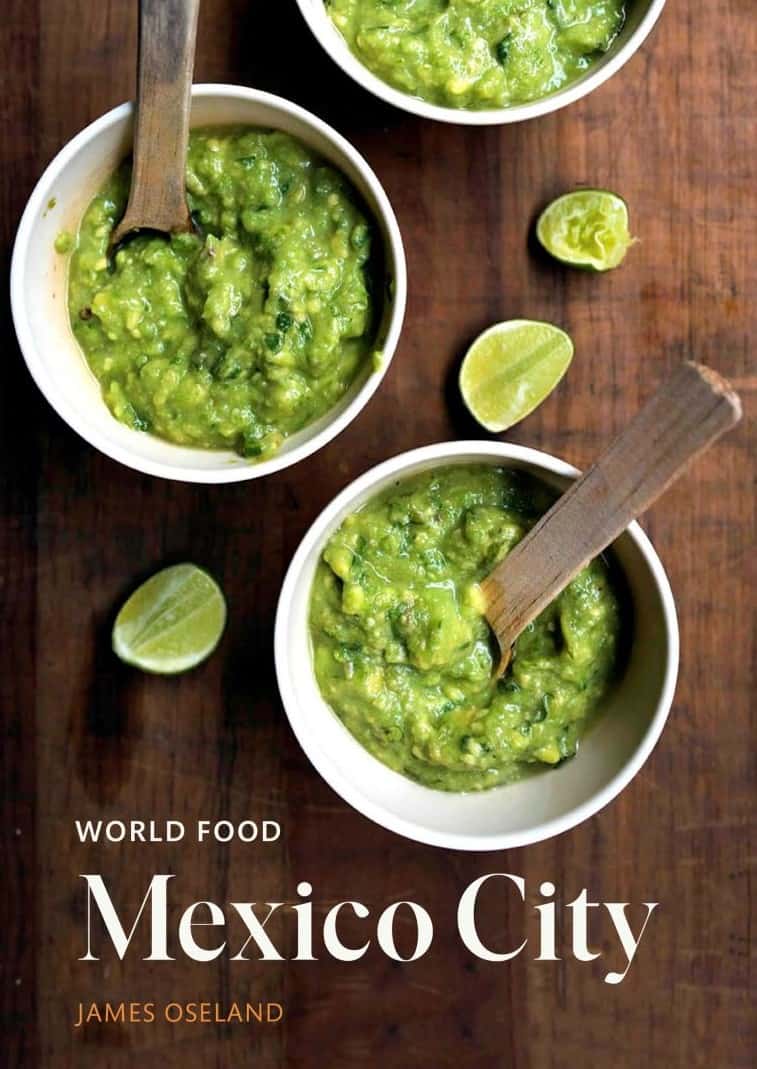As the former editor of Saveur magazine and a cookbook author, veteran food writer James Oseland has traveled the world for over 30 years, visiting international cultures and their cuisines, but his passion for travel and food began in Mexico.
Although he traveled with his family as a child, his first real experience outside the United States began as a wild idea, a road trip through Mexico with his father. They drove from the Texas border to Chiapas and back over the course of three weeks, stopping in Mexico City on the way down and back.
“I knew the moment that I stepped foot out of that station wagon and onto the zócalo [main square] that I had become someone that I wasn’t before.”
What changed? Mexico gave him the sense of being “someplace else,” a place where there were similarities but also differences as to what a culture and society are.
“A fire was lit,” he says.

Oseland has had a long and distinguished career writing about food, passionately believing that you can understand a culture through its cuisine. As a U.S. citizen, he has had the “great fortune of living next door to what for all intents and purposes is the Latin American version of Italy in terms of richness, complexity and interestingness.” But developing a career before the internet era meant needing to live where the publishing world is, and for about three decades that was New York.
Not that he abandoned Mexico.
“I always had the idea in my back pocket that when I need a break from whatever I was doing in the United States, I can just go to Mexico in four to five hours by plane and I can be in this other place.”
While he strove to get to know as much of the country as he could, he has lost track of the number of times he has returned to Mexico City.
So, when he succeeded in negotiating a series of cookbooks on the cuisines of the world, the obvious place to begin was Mexico’s capital to repay “a debt of gratitude I have for the knowledge and experience I received.” Oseland returned to Mexico City, rented out an apartment in the historic center and worked out 75 recipes there.
The result is World Food: Mexico City, a curious mix of recipes, stories and cultural information as it applies to food.

It is an unusual take on Mexican cooking, one that avoids much of the cliché that appears in many Mexican cookbooks, demonstrating Oseland’s decades-long relationship with the country. The book seeks to engage home cooks who look to have a little taste of a faraway world, a kind of armchair travel in the kitchen, through both anecdotes of everyday people and recipes adapted to foreign kitchens.
As a 12-plus-year resident of Mexico City with a chilango (Mexico City native) husband, I recognized most of the recipes, including comfort foods such as lentil soup with bacon, tamales, enchiladas, Mexican-style shrimp cocktail, and carnitas (pork confit). These are the foods Mexicans eat at home, in cantinas, in local restaurants and on the street. There are a few creative recipes that give a nod to the city’s well-developed dining scene, Oseland says, but “I wanted to focus on home cooking because here the truth of the culture is revealed.”
Oseland also believes that “in Mexico City, you have the cuisines of Mexico.” To bolster this point, he includes dishes such as birria (stewed beef or goat from Jalisco), tlayudas (Oaxaca’s “pizza”) and miners’ enchiladas (San Luis Potosí and north).
Some dishes, such as carnitas (Michoacán), shrimp cocktail (the coasts) and pozole (Guerrero) have become completely adopted into Mexico City cuisine. However, I should note that the integration of dishes from the provincia follows migration patterns into Mexico City. For this reason, lacking are dishes from the Yucatán and the north of the country.
The book balances the cookbook’s need to categorize types of recipes and the cultural elements that make Mexican food special. One section is dedicated to corn prepared in different ways, from stews to tamales, with tacos downplayed. The appetizer section pays homage to the chile pepper. Although Mexico City is located on a high mountain plateau, the book includes an extensive section on seafood.
This may seem odd, but Mexico City, as the center of an empire and country, has been the destination for much of the country’s food production. Today, it is home to the world’s second-largest seafood market after Tokyo.

My favorite section is the platos fuertes (main courses). These are the meals cooked in homes and small family restaurants.
Appropriately, the book does not have a section on baked goods. Mexicans love their sweet bread, but since the colonial period their creation has been the purview of local bakeries. Home baking is simply not a thing.
Oseland came to Mexico City to work on the book and nothing else, but that idea did not last long.
“Maybe at the subconscious level I was thinking about making the move, but it wasn’t until then when I started connecting the dots and realized, ‘Oh, I can live here in this wonderful place. I don’t have to just visit now. I can shop at the markets I love and bring home those fruits and herbs and put them in my own kitchen in this wonderful place that inspires me and energizes me.”
The writer now focuses on basic Mexican home cooking for his everyday life, cooking beans in clay pots and charring vegetables on comal griddles. He cannot imagine doing it any other way.
Although his professional focus is still global, with the second book in the series focused on Paris, the shift to living in Mexico still has an effect. Many of the French recipes were tested working with the cooks he admires from the Mexico City book. It makes sense given that the idea is to make the recipes accessible to cooks unfamiliar with the cuisine.
The series is an ongoing, open-ended project. Asked if he would come back to a Mexico-related topic in a subsequent book, he said, “We’ll see. Because Lord knows there are such complex and rich stories of regional cuisine in Mexico that could be told.”
• World Food: Mexico City is available on Amazon.
Leigh Thelmadatter arrived in Mexico 17 years ago and fell in love with the land and the culture. She publishes in various Mexico-based publications and her first book, Mexican Cartonería: Paper, Paste and Fiesta, was published last year. Her culture column appears regularly on Mexico News Daily.
